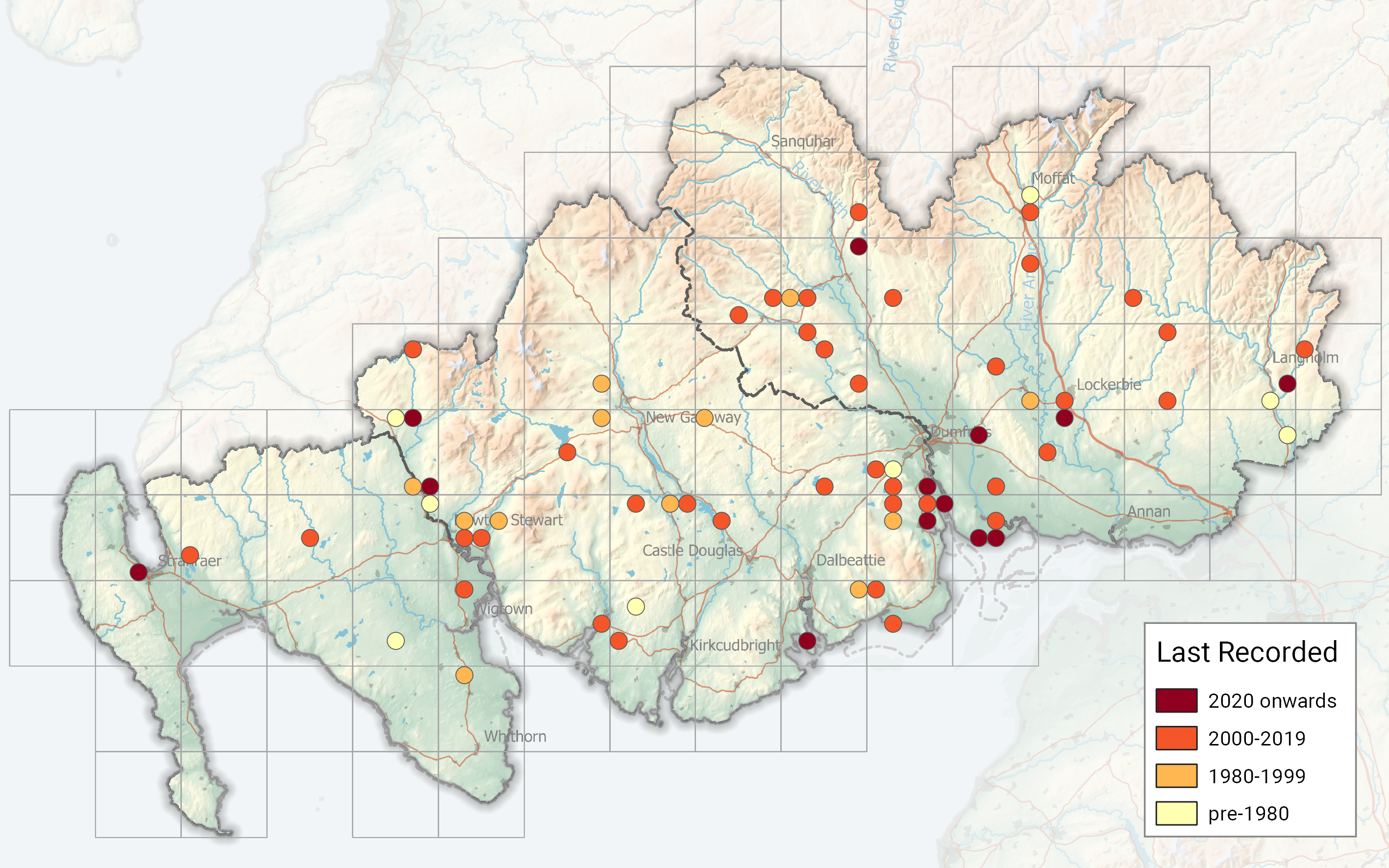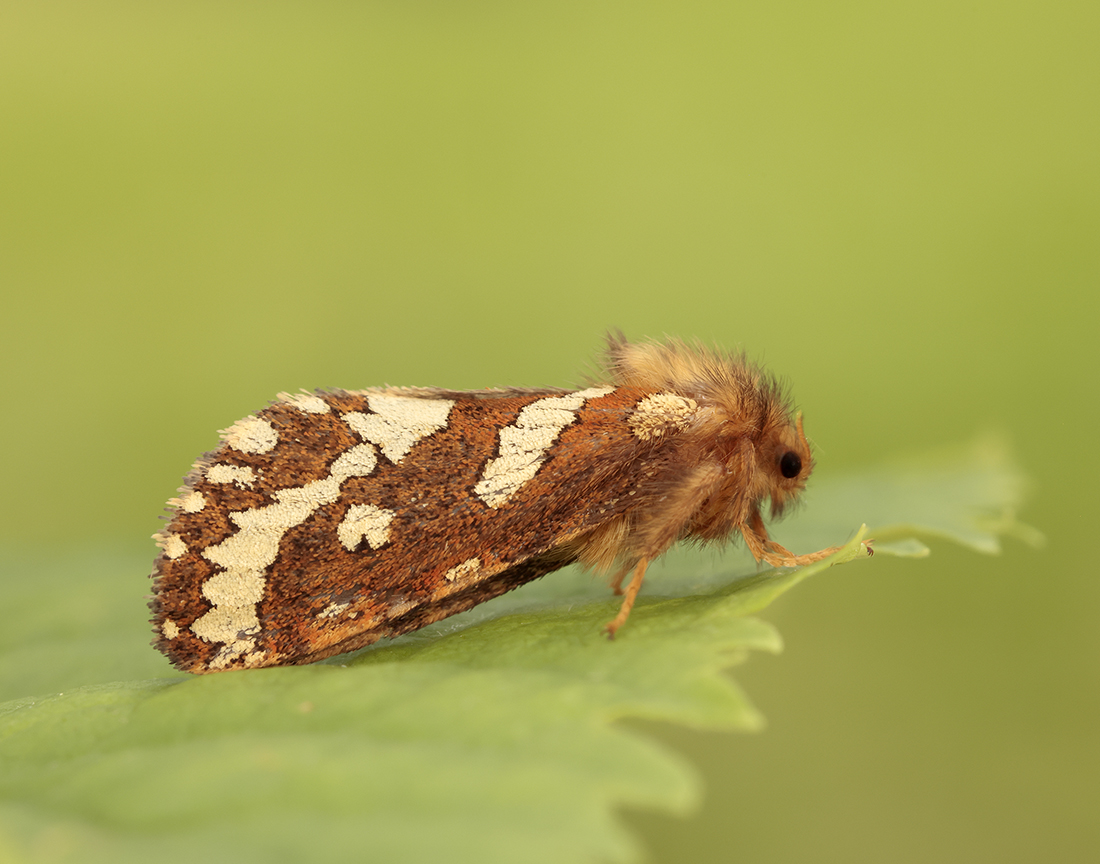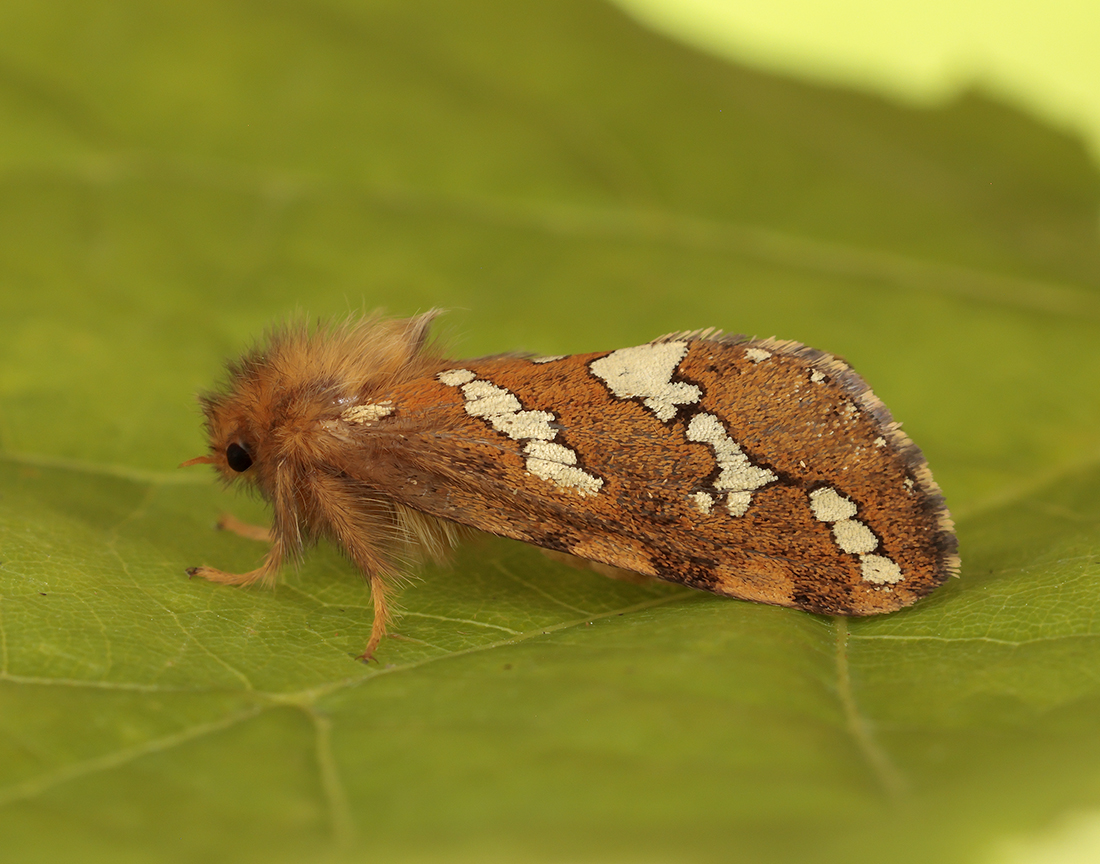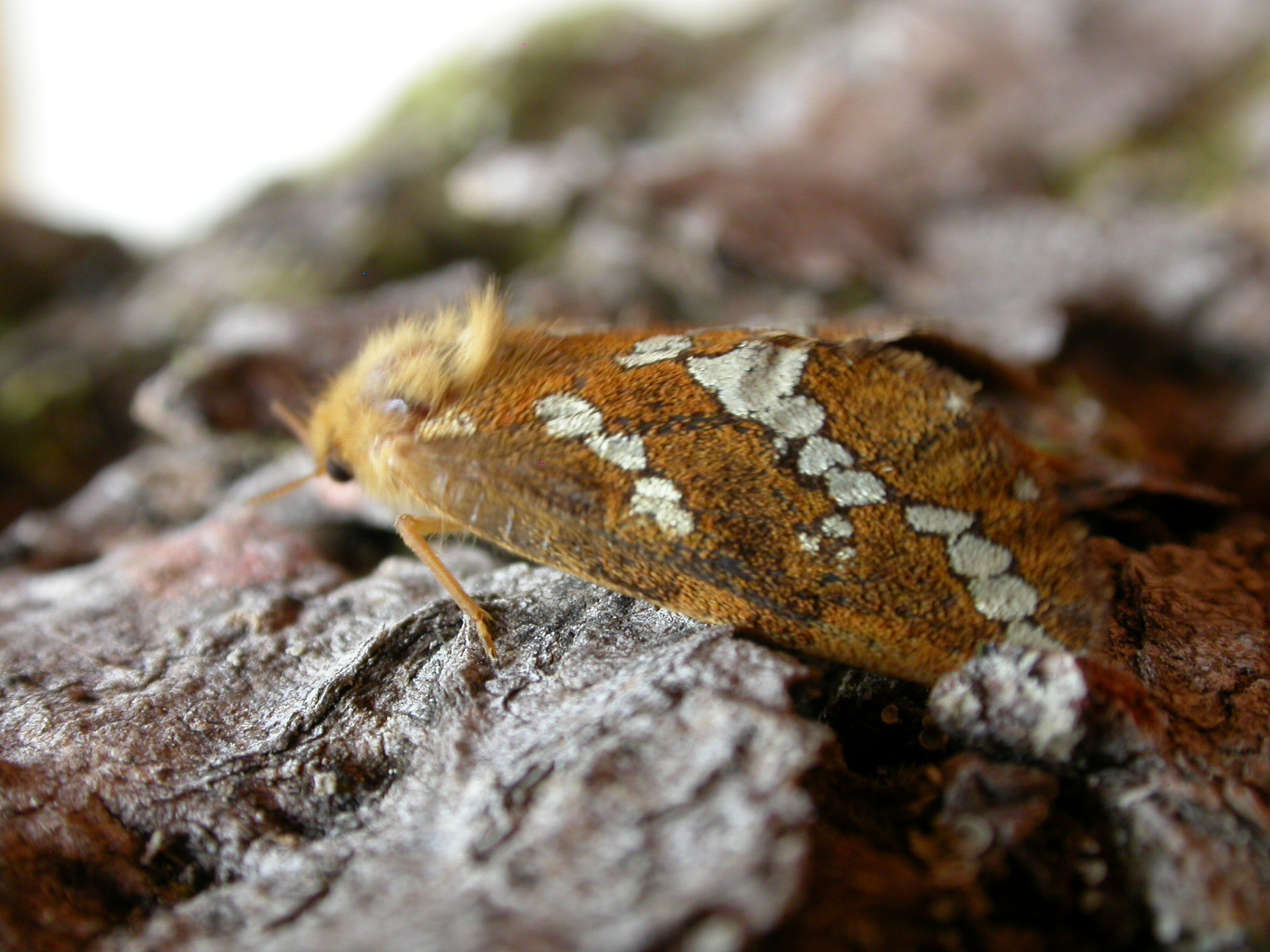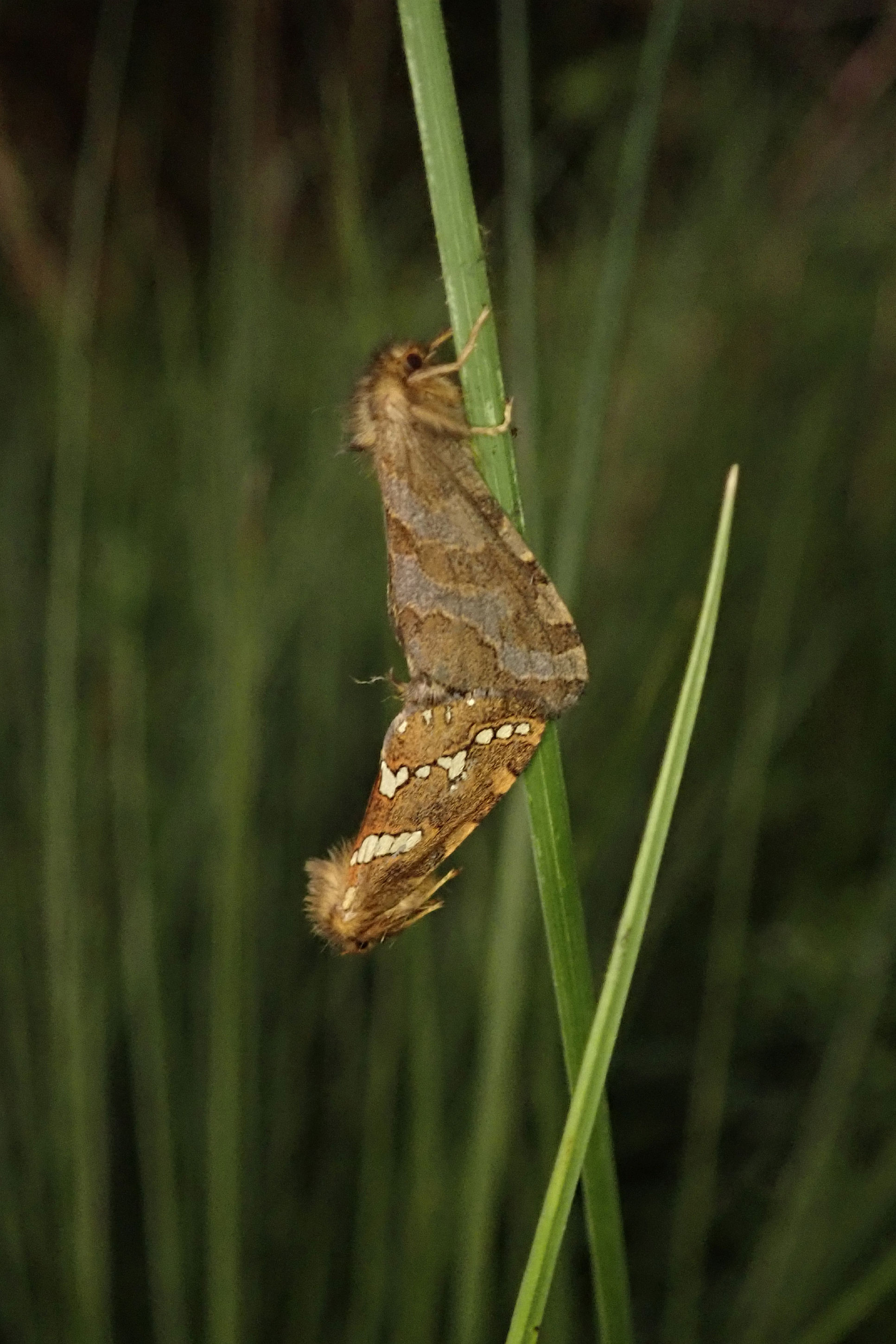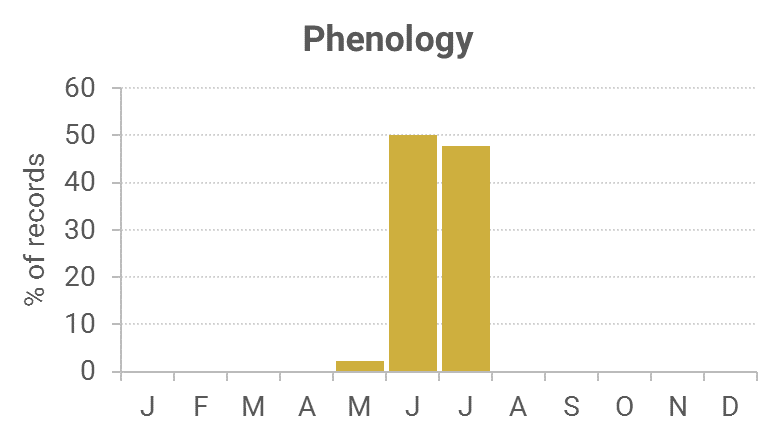Identification
The male has diagnostic golden markings on the forewing, whereas the duller female has a broad, purplish-grey bands across the forewings. The adult Gold Swift has no proboscis, so it is never found at sugar or flowers. The male’s hind leg has no tarsus but has a swollen tibia used in the release of pheromones.
Life cycle
One generation. Overwinters as a larva, but probably taking two seasons for development. Pupates underground.
Comes sparingly to light, but sometimes seen in groups performing ‘dance’ flight at dusk.
Larval foodplants
Larvae feed mainly on Bracken.
Habitat
Open woodland and scrub.
History 1860-2010
Alexander Somerville of Glasgow (1858) in his list dated 4th September of ‘Captures near Moffat,’ caught one on 26th July. He goes on to say he only sugared three times, but also that he had swept his net. Lennon (1863) had a record for Dalskairth, Kirkcudbrightshire, but stated it was “rather scarce.” Gordon (1913) had found one on a grass stem in wood on 11th June 1911 and on the side of a burn at dusk, 16th July, 1911, both near Corsemalzie, Wigtownshire.
MOGBI (1983) had only one 10km square post 1960 record, which was of one caught at the Rothamsted station at Penninghame (VC74) in July 1976; this being the only record caught by this method. Since then, it had been trapped in Kilsture Forest (VC74) in 1989 and Kirroughtree Forest and Bargaly Lodge (VC73) in 1991.
From 1992 to 2013 it was recorded annually in small numbers mainly in VC73, with some in VC72, from widespread sites. There are only four records for Wigtownshire, two Victorian, then singly in 1976 and 1989.

